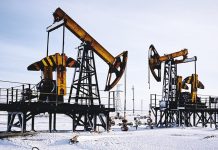Operating costs are still coming down in North American natural gas and oil plays. This isn’t showing up as reduced all-in costs on the financial statements of these energy producers just yet, but it will.
Costs are lowering for two reasons. One is demand destruction, which has cut in half the number of rigs drilling for oil and gas in North America. This has meant that rig rates have also dropped – energy executives are saying they see 20%-35% cost reductions year over year. Lower drilling costs have an obvious impact on profitability.
The second is that companies in both the US and Canada are figuring out how to properly frac these new unconventional gas plays – both tight gas and shale gas.
There was a 20 year learning curve to get the first shale play, the Barnett Shale in Texas, into production. (It’s actually a great story of petrochemical engineering and sleuthing that I will share with you all another time.) Well, that learning curve is still happening. Production out of these long horizontal wells is getting better in ALL the unconventional gas plays (and oil plays) in North America.
Chesapeake (CHK-NYSE) is the largest natural gas producer in the US. They announced in their latest quarterly that they have a new well producing 9.6 million cubic feet of natural gas (mmcfe) – and associated liquids – per day during the past 30 days, which they believe to be the highest 30 day rate of any well in the entire Barnett Shale play to date.
In the Bakken oil play in North Dakota, Canada’s largest brokerage firm, RBC, said in a May 22 report that average initial production (IP) rates have moved up from 417 boe/d in Q2 2007 to 1294 boe/d in Q2 2009. (This number can be skewed by where in the play is being drilled, but the trend is clear).
Calgary based securities firm Tristone Capital says wells in the Montney gas play on the BC-Alberta border are now 8-10 mmcf/d, about twice what they were when the play first started.
And as I wrote in an earlier article, the energy producers are learning how to frac these plays much better, using special mixes of chemicals and water to get the most oil or gas out of these new, very tight reservoirs. It can sometimes take some expensive trial and error on how to get that frac formula right.
Tristone estimates the average break even level of these new shale plays is now hovering around $5/mcf, with the best plays already at $4, and as the learning curve goes up, the cost curve will continue to go down, taking the break even price for natural gas production down with it.
What will likely mask these costs on the financial statements of these companies is the huge land acquisition costs these companies had to pay for these unconventional plays. As an example, British Columbia in Canada has sold their land rights at an average $680/hectare (1 hectare = 2.5 acres) compared to $3511 per hectare over the same time frame in 2008 – and B.C. has the new Horn River Basin in the north and part of the Montney gas play along the Alberta border. Both 2007 and 2008 saw huge land cost increases across North America as companies rushed in to buy up acreage.
In the industry you will hear of this being talked of as “full-cycle” costs – how much it costs to get the gas to market right from the time the land is purchased – versus “half-cycle” costs, which, in broad terms, is really just the operating costs.
Companies usually show their long term finding costs (how much it cost to find and develop a barrel of oil into a reserve category) in their financial statements over the life of their reserves. So those very high land acquisition costs will get amortized in over a long period of time.
For the majors, this is not a big deal – their finding costs rarely vary – but for junior and intermediate companies whose reserves can change a lot it can have a big impact on their balance sheets.
Until some of these high land costs are amortized out, don’t expect to see the “accounting” cost of finding a barrel of oil – usually shown as DD&A – Depletion, Depreciation and Amortization – on the balance sheet, to go down much, even though “real” costs are dropping a lot.
So when people ask “Where is all the cheap gas?”, it’s here, and it’s getting cheaper by the month, but it might not show up in the companies’ financial statements for awhile.







